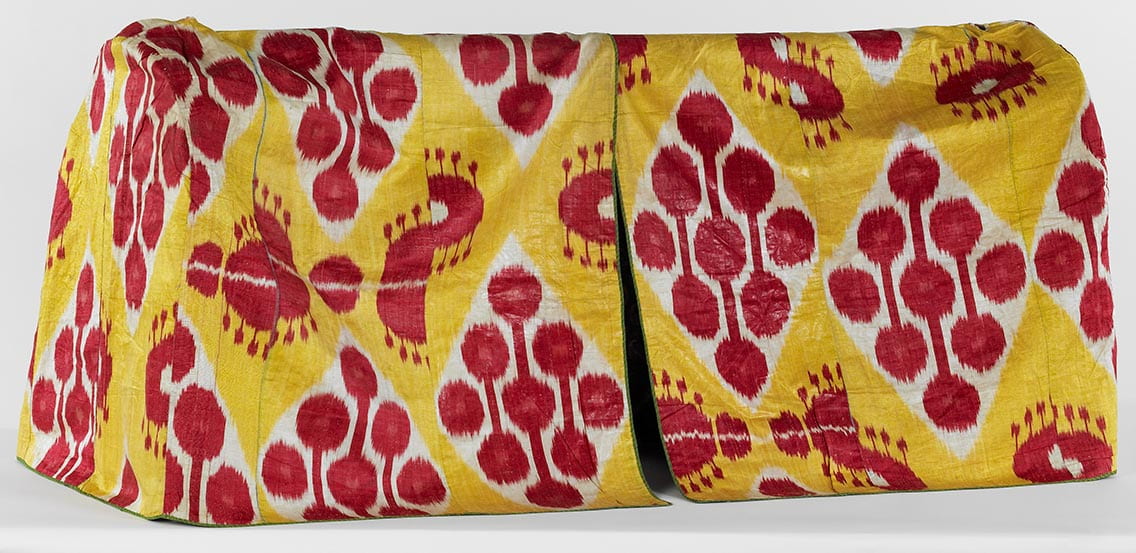This beautiful silk ikat cradle cover from Bukhara, Uzbekistan, was created to provide spiritual protection and physical comfort for an infant. Due to a history of high infant mortality, Uzbeks developed an elaborate ceremony designed to celebrate and protect infants in their first 40 days. During the ceremony, the baby is ritually placed in the cradle by the eldest family member as part of a larger celebration by family and friends. The cradle, or “beshik,” is highly decorated and often carved from a special wood, such as willow.

Small triangular objects stuffed with cloth are hung on the cradle handle to chase away or confuse evil spirits. The baby is strapped into the cradle with an attractive fabric covering an ingenious toilet system that precludes the need for diapers. A heavy cover fitted over both ends of the cradle can be opened or closed over the baby. Its design sometimes features rectangles and diamonds arranged crosswise for both decorative and protective reasons.
This cradle cover was made from warp-faced ikat fabric. It was “calendared” or pressed between rollers with egg wash at a high temperature to add a glossy finish to the silk. The curtain is also lined with Russian printed cotton fabric decorated with botehs (paisley) motifs. The bright colors and expensive materials reflect hopes for the baby’s rich future.

